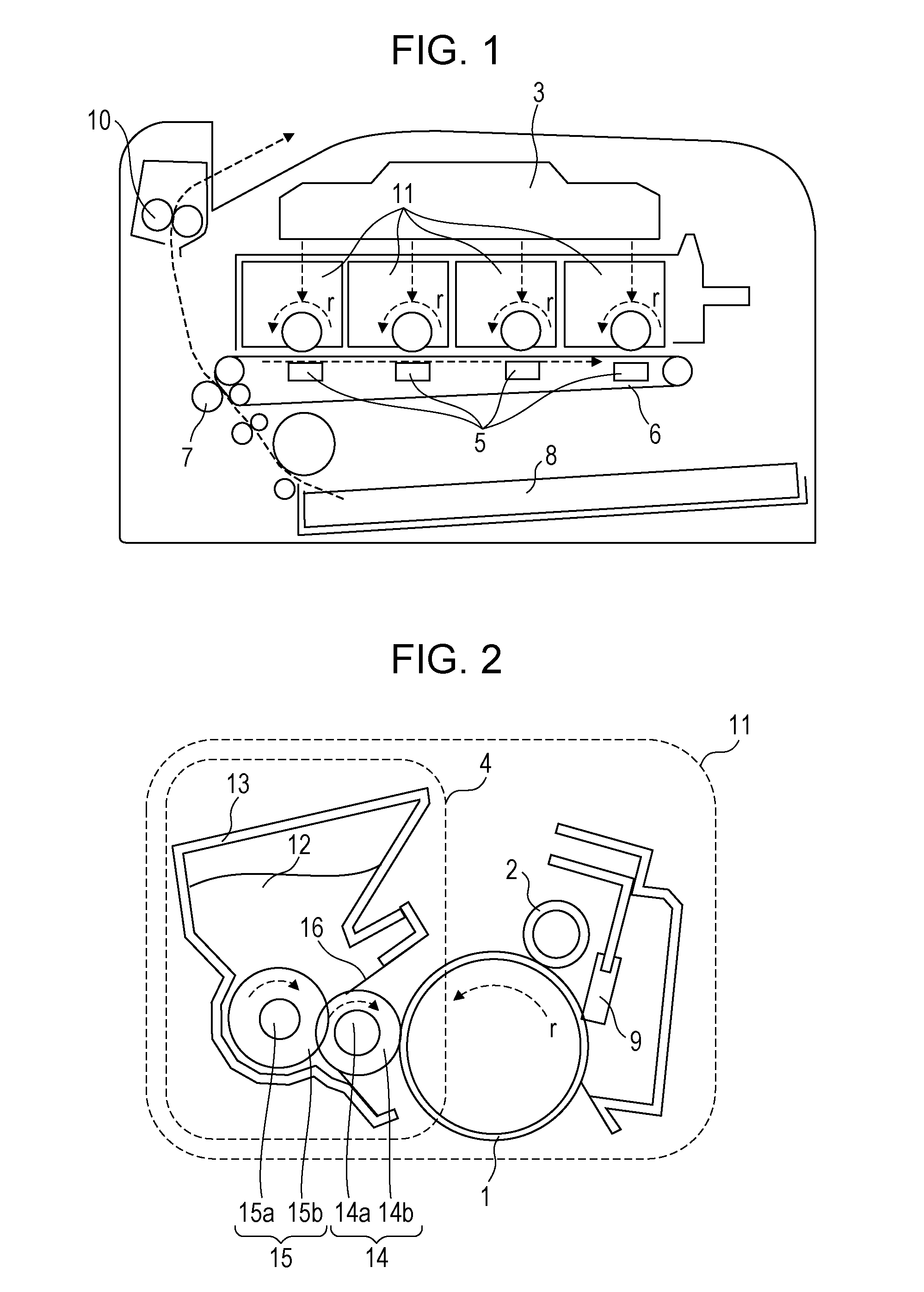toner
a technology of toner and spherical paper, applied in the field of toner, can solve the problems of affecting the resulting image quality, affecting the transferability of toner, and affecting the quality of the image, so as to achieve stable high quality and maintain the transferability. high
- Summary
- Abstract
- Description
- Claims
- Application Information
AI Technical Summary
Benefits of technology
Problems solved by technology
Method used
Image
Examples
first embodiment
[0024]The toner base particles whose surfaces contain a low-density polyethylene having a density of less than 0.930 g / cm3 and a weight average molecular weight of 10 thousand to 5 million, as well as a cycloolefin copolymer, allows a high elastic deformability to be imparted from the low-density polyethylene to the surfaces of the toner particles. The external additive is thus prevented effectively from being buried in the toner base particles. Consequently, the toner can stably form satisfactory images over a long time.
second embodiment
[0025]In another embodiment, the elastic deformation rate Es of the resin defining the surfaces of the toner particles is increased so that the resin can push back the external additive that is temporarily buried in the toner particles with a shear stress applied when the toner passes through a rubbing section in the developing unit. It is thus expected that the degree of burying the external additive can be reduced.
[0026]By allowing a resin having an elastic deformation rate Es of 70% or more to be contained in the surfaces of the toner base particles, the external additive can be prevented effectively from being buried. In this instance, the melting temperature Tm of the resin is controlled to 125.0° C. or less so that the resin can have desired melting properties and thus exhibit good fixability while the degree of plastic deformation thereof is reduced. The elastic deformation rate Es is desirably 75% or more and 85% or less. The melting temperature Tm is desirably 120.0° C. or ...
example 1
(1) Step of Forming Core Particles
[0130]Resin fine particles C1 were produced as core particles by a suspension polymerization method. Details of this process are as below.
Preparation of Polymerizable Monomer Composition
[0131]The following materials were mixed and dispersed in each other for 3 hours in a ball mill.[0132]Styrene: 82.0 parts[0133]2-Ethylhexyl acrylate: 18.0 parts[0134]Divinylbenzene: 0.1 part[0135]C.I. Pigment Blue 15:3: 5.5 parts[0136]Polyester resin: 5.0 parts[0137](polycondensate of propylene oxide-modified bisphenol A and isophthalic acid, glass transition temperature Tg=65° C., weight average molecular weight Mw=10000, number average molecular weight Mn=6000)
[0138]The prepared dispersion liquid was heated to 60° C. while being stirred at a rotational speed of 300 rpm in a reactor equipped with a propeller stirring blade. Then, 12.0 parts of an ester wax (DSC-measured maximum endothermic peak temperature: 70° C., number average molecular weight Mn: 704) and 3.0 pa...
PUM
| Property | Measurement | Unit |
|---|---|---|
| melting temperature | aaaaa | aaaaa |
| melting temperature | aaaaa | aaaaa |
| particle size | aaaaa | aaaaa |
Abstract
Description
Claims
Application Information
 Login to View More
Login to View More - R&D
- Intellectual Property
- Life Sciences
- Materials
- Tech Scout
- Unparalleled Data Quality
- Higher Quality Content
- 60% Fewer Hallucinations
Browse by: Latest US Patents, China's latest patents, Technical Efficacy Thesaurus, Application Domain, Technology Topic, Popular Technical Reports.
© 2025 PatSnap. All rights reserved.Legal|Privacy policy|Modern Slavery Act Transparency Statement|Sitemap|About US| Contact US: help@patsnap.com


